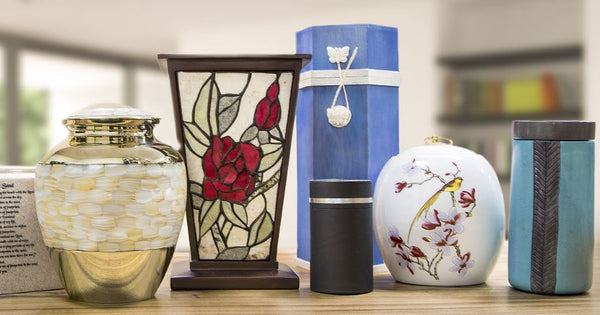by J. Malec
When it comes to memorial urns, the rule “one size fits all” doesn’t apply. For instance, in a family decision regarding the loss of a loved one, there are potentially four generations’ worth of views to consider. Traditionalists, Baby Boomers, Generation X and the Millennials experience loss through a different lens. And Americans are the most likely to intermarry between cultural groups creating another consideration, another lens.
End of life decisions are often infused with emotions. Additionally when planning a memorial and choosing how to memorialize a loved one, economics, design aesthetics and the functionality of a memorial product are important issues. Cultural and generational influences enter into the equation now when making these important choices.
Generational differences when planning a memorial
The West Midland Family Center created a great chart illustrating the differences between generations available through their website. Their analysis isolates specifics, such as:
- historical events that shaped the experiences of each generation
- core values
- views on work
- family values and more.
The combined impact of these form unique perspectives owned by each generation. When viewing cremation urns for ashes or planning a memorial service, keep in mind that the various perspectives affect an individual’s input on choices. Our planning guide, 4 Questions to Consider When Choosing a Cremation Urn, offers practical advice and a neutral place to begin. And it’s essential for everyone to keep the deceased’s wishes as the foremost priority.
A few things to keep in mind for those involved in the planning process:
- Consider giving up some ground in the interest of focusing on peaceful compromises within the group.
- Emotions are likely to run high after the loss of a loved one. Avoiding conflicts is in everyone’s best interest.
- Any inter-generational tensions developed while making the necessary preparations will likely subside after the memorial service has passed.
- Be empathetic. Elders might be dismayed at the choice of cremation over a traditional burial. The younger generation might not understand why it’s important to observe traditions in laying a family member to rest. Misunderstandings can be seen as a chance to bridge the generational gap.
Cultural differences that influence end of life choices
Diverse cultural backgrounds within a family also carry a great impact. Cultural funerary practices are among the strongest and deeply held traditions. Memorial preparations and urn selection can be a challenge when traditions collide within one family.
Many American families are unique. No other country is made up of such a varied social mosaic. We are the most likely to intermarry between cultural groups. Thus we are the most likely to have to reconcile differing ethnic practices around death and memorialization. The website, LoveToKnow, offers a sampling of funeral practices from around the world on the section of their blog devoted to death issues.
Consider just a few distinct cultural practices:
- the Jewish culture generally frowns upon cremation
- Hindu culture requires cremation
- some nations require that the body be prepared by the family
- other customs require a waiting period before burial
- some hold a feast to honor the life of the deceased, and
- others must wear mourning attire for a prescribed period after the death of a family member.
We are all familiar with the rituals unique to our culture and family. These customs will shape how we proceed when planning for a memorial more than anything else.
Urns that reflect culture and appeal to generations
Many urns reflect the aesthetics of a particular culture. For those of Celtic descent, the Celtic Cross Cremation Urn - Large is a very popular design which pays tribute to an ancient heritage. Or, if your family hails from the Asian continent, traditional Asian styled and inspired cremation urns, including cloisonne cremation urns, are often sought. One exceptional cremation urn is the Genuine Jade Cremation Urn - Hand Carved, which is made from a solid block of jade stone. There are a myriad of options to choose from including hand-carved soapstone urns and keepsakes from Africa, hardwood boxes featuring scenes from the American Southwest and many, many more, suitable for any need.
Urns can be engraved with a symbol representative of a family’s blended heritage. Urns can also be handcrafted. Our above-mentioned planning guide offers a place to begin the process of identifying needs and asking questions on how to choose an urn. Generations and cultures within a family can find a solution that reflects the family’s unique composition.
J. Malec is a visual artist and writer whose work often deals with themes related to loss and healing. She lives in Minneapolis, and spends much of her time practicing permaculture in the city.

